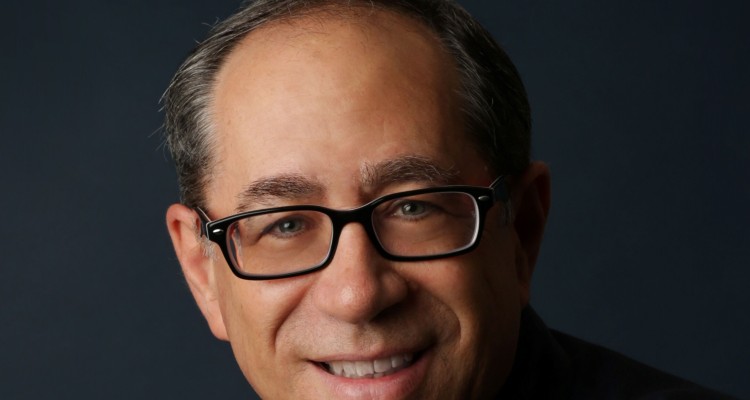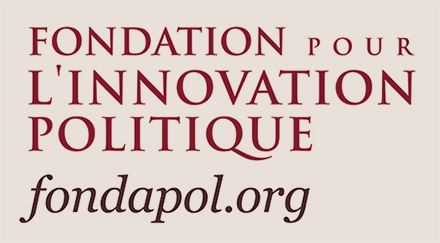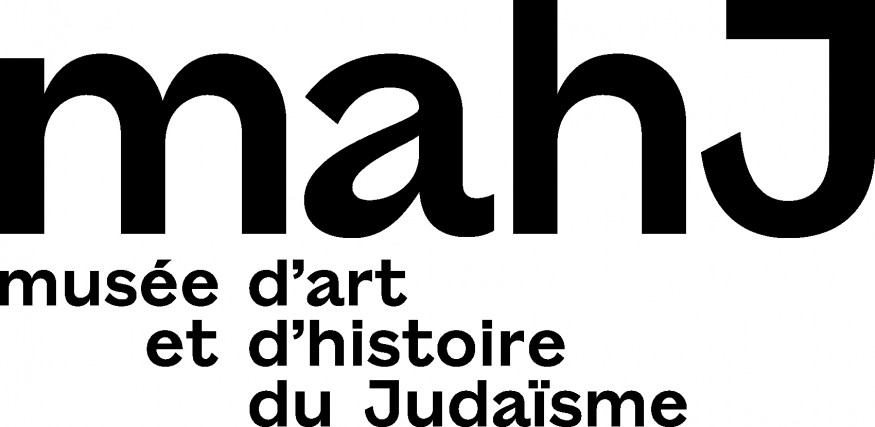Since 2018, Michael Blume has served as Commissioner for Combating anti-Semitism in Baden-Württemberg. Stuttgart, the capital of this southern German state, has found itself at the center of nationwide controversy since last spring: It is the home of Querdenken 711, an anti-quarantine/anti-vaccine movement spawned in the early days of the COVID-19 pandemic which has since made its name as one of Germany’s protest movements most radical, most violent, and most tolerant of anti-Semitsm. K’s Samuel Petit discussed with him the rise of conspiracy theories, protest movements, and the new face of an old hatred.
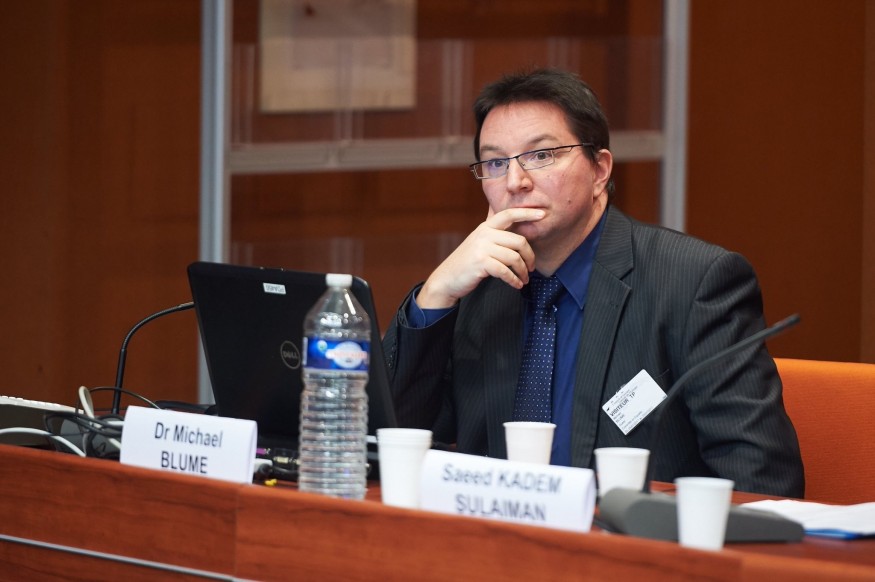
Samuel Petit: Would you introduce yourself?
Michael Blume: My name is Michael Blume. I’m 44 years old. I was originally trained as a banker, and then eventually went on to earn a doctorate in religious studies and human brain research. I am a member of the Christian Democratic Party. I myself am a Christian man, married to a Muslim woman: Ours is what is called an interfaith marriage, with three children. In 2015 – 16, I led the special contingent from the State of Baden-Württemberg to Iraq. There, we helped provide asylum to 1100 Yezidi women and children from Iraq who were in the hands of the Islamic State. Among those threatened by genocide was future Nobel Peace Prize winner Nadia Murad, whom we were able to bring to Germany. In 2018, following a proposal made by the Jewish community, I was appointed by all parliamentary groups in Baden-Württemberg, (with the exception of the far-right party the AfD [Alternative for Germany]) as the first Commissioner for Combating anti-Semitism in the state’s government. This means, among other things, working in politics and academia to combat conspiracy theories.
SP: There are commissioners for combating anti-Semitism both in the federal government and in thirteen of Germany’s sixteen states. These positions have existed since 2018–you were the first to hold such a position. For what purpose were these created?
MB: These ministerial positions were created following a recommendation by an expert council to the Bundestag. The recommendation was prompted by the recognition that the fight against conspiracy theories and anti-Semitism could only be effective if there were people in charge of these issues in the administration and in the government. This council of experts also relied on two surveys conducted at the European level in 2012 and 2018 by the European Agency for Human Rights, which concluded that throughout Europe there had been a rise in anti-Semitism, especially on the Internet.
The idea that anti-Semitism is only present among Muslims or on the far right must be challenged.
It was therefore a proposal from the academic world to the political class that the country’s Jewish communities approved. Until recently, when anti-Semitic acts took place, we turned to the Jewish communities to understand. But such communities are the victims of such attacks, not the experts who have to answer the question of why they are committed. It is rather the responsibility of the German state to answer this question and to prevent these acts.
SP: What is the state of anti-Semitism in Germany today?
MB: I would say that there is no quantitative increase of anti-Semitism, and I even think there are fewer and fewer anti-Semites. But people who are openly anti-Semitic or racist are networking on the Internet. Consequently, they are growing more radical, and their voices are getting louder. On the one hand, the proportion of reasonable people is always greater, but on the other hand, those who believe in conspiracies are becoming more zealous in their beliefs, and this gives the impression of a polarized society.
Anti-Semitism is nothing new in Germany. It did not disappear with the Nazi regime; it was only excluded from the public debate, which created the illusion that its suppression would mean its death would come with the death of the last Nazis. But the effects of the financial crisis of 2008-2009 effectively dispelled this myth, and this was confirmed by the European surveys of 2012 and 2018. They showed that, in Germany, there was an increase in extreme right-wing and Muslim anti-Semitism. In Poland, right-wing and Christian anti-Semitism takes precedence, while in Spain it is left-wing anti-Semitism that’s dominant.
In Germany, three forms of anti-Semitism are predominate: First of all, there is the classic right-wing anti-Semitism which supports the idea that Hitler lost the battle against the Jews but that the war is not over. These are the most violent, the ones who commit the greatest number of terrorist attacks in Germany.
Next, there is libertarian anti-Semitism, which is composed of people who call themselves centrists or even leftists. This anti-Semitism is as much that of esoteric neo-hippies as of small businessmen who all share the idea that the Rothschilds want to take away their freedom. These libertarians make up a significant part of the current contingent of demonstrators against the current health policy. They are the ones who wear yellow stars with “Non-vaccinated” or “Diesel Driver”[1] written on them. Their most famous spokespersons are Oliver Janich and Tilman Knechtel. The latter comes from the same town as I do, Filderstadt in Baden-Württemberg, but he now lives in Switzerland, where one can spread anti-Semitic rhetoric even more freely than here. He maintains, for example, that the Rothschilds forced poor Hitler to commit the Shoah so that the State of Israel could come into being. Absolutely everything that goes wrong is to be blamed on the Jews. With him, we are immersed in the basic Jewish world conspiracy.

Finally we have anti-Semitism among immigrant populations: Muslim anti-Semitism. This form of anti-Semitism is unevenly spread among Muslim populations, for example it is less common among Kurdish immigrants. But when this form of anti-Semitism mixes with the anti-Semitism of the extreme left, it can lead to something quite dangerous.
SP: In Germany, one often reads and hears the slogan Gegen jeden Antisemitismus, which could be translated into English as Against all formùs of anti-Sdmitism[2]. In France, we tend to speak of anti-Semitism in the singular. Why is this plural form important?
MB: Given German history, here, the accusation of anti-Semitism is the worst accusation. Anti-Semitism is something that is present, at different levels of virulence, in all layers of society. But because of the shameful nature of anti-Semitism in our history, there is often a denial that it exists within a given organization, group or community, especially when it is a community to which one belongs. Consequently, one of the most effective defenses against the accusation of anti-Semitism is to accuse other groups of having a monopoly on anti-Semitism. The idea that anti-Semitism is only present among Muslims or on the far right must be challenged. We often hear phrases like: “Yes, it is important to fight against anti-Semitism, but there isn’t any anti-Semitism in my party, or in my school, or in my company, etc.” The first action to in tackling anti-Semitism is tackling the denial of anti-Semitism everywhere in society.
In order to prevent and address issues of anti-Jewish hatred, it is important to understand the specifics of each form of anti-Semitism in different population groups. However, anti-Semitic stereotypes have, thanks to conspiracy theories in particular, an unusual capacity to adapt, and to mix with other conspiracies. These mixtures–these convergences–of anti-Semitism are also sought after by notorious anti-Semites. This is what can be observed, for example, when members of the neo-Nazi party NPD participate in the Al-Quds-Day demonstration organized by Islamists.
SP: How widespread is anti-Semitism in German society?
MB: We have had many surveys on the subject, even on a regional level for some time. It is customary to differentiate between so-called latent anti-Semitism, i.e., people support or take for granted biased statements, and overt anti-Semitism, i.e., those with a worldview decidedly centered on the Jewish conspiracy. In Germany, there are generally about 20% latent anti-Semites and about 5% overt anti-Semites. This is not enough to pose a real threat to democracy, but it does provide sufficient ground for right-wing populist parties to flourish. The real danger arises when, within this 5%, the radicalization takes a violent turn, as in the case of the Halle terrorist[3]. We often speak of lone wolves, but his act is the result of a logic within a larger group, in his family and especially on the Internet.
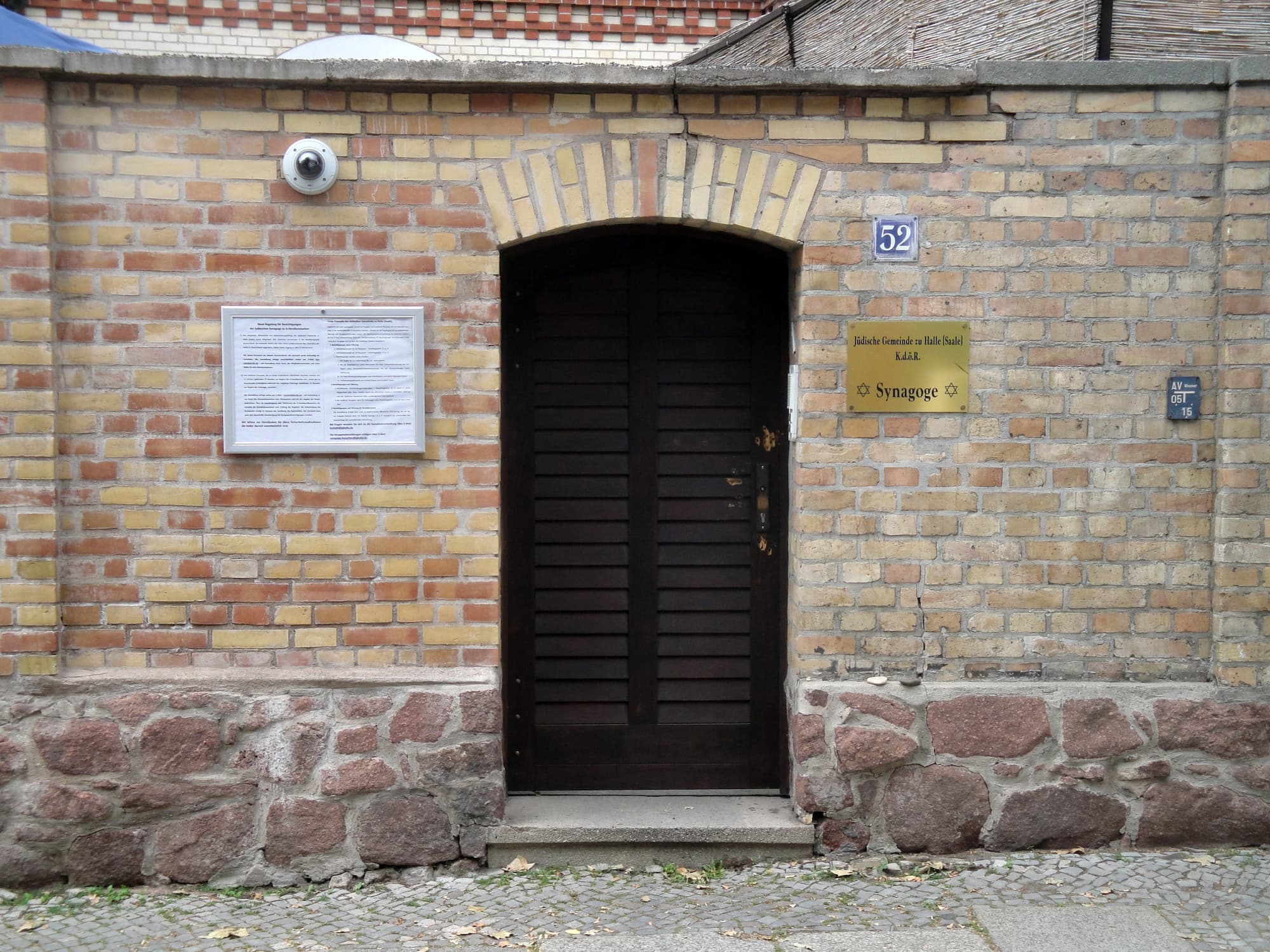
SP: How did the recent conflict between Israel and Hamas affect the trends of anti-Semitism that we have discussed?
MB: Israel-related anti-Semitism in Germany is very strong because it also serves to neutralize feelings of guilt: many Germans, especially older ones, tend to equate Israel with the Nazi regime to this end. Anti-Semites, on the other hand, are indifferent to the actual repression of Palestinians by Hamas in Gaza because it is a form of oppression in which it is extremely difficult to implicate Jews.
Israel-related anti-Semitism in Germany is very strong because it also serves to neutralize feelings of guilt: many Germans, especially older ones, tend to equate Israel with the Nazi regime to this end.
Unfortunately, in 2014, we [in Germany] saw many significant pro-Hamas demonstrations, the effects of which were compounded by particularly aggressive online campaigns, often launched from Turkey. European anti-Semitism’s vulnerability to cooptation and inflammation by foreign powers remains a real danger for Europe.
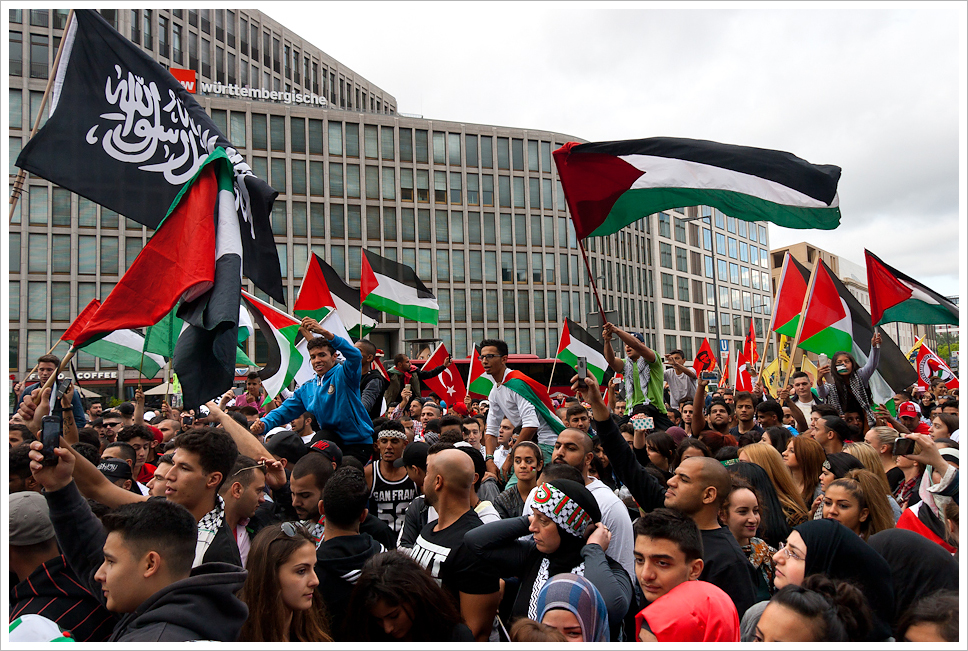
SP: You believe that in order to fight anti-Semitism, conspiracy theories must be debunked. How do you explain this link between anti-Jewish hatred and conspiracy theories?
MB: One of the peculiarities of anti-Semitism is that it is a system: That is to say, it isn’t just the product of accreted prejudices against Jewish individuals. It is a bundle of discriminatory myths that function as a complete ideology.
When people believe in conspiracy theories–chemtrails, for example, or theories related to the COVID-19 pandemic–they always end up sliding into anti-Semitic patterns. I like to compare it to a canyon: no matter which way the water goes, it always ends up flowing into the same ditch. Jewish communities ask me why they find themselves accused of everything, even a virus which originated in Wuhan–it is hard to imagine a place on Earth more remote from a Jewish community. Still, ever since last January, supporters of conspiracy theories have claimed the Rothschilds and George Soros are behind it all.
The importance of conspiracy theories today is a visible element of the way the Internet is, more broadly, warping society: people are creating online bubbles in which they comfort each other. This is a phenomenon that can be observed in groups such as the German Querdenken, the American QAnon or, in part, the French Gilets Jaunes[4]. These transformations are taking place all over the world and are, from a historical standpoint, nothing new: As Marshall McLuhan and Harold Innis have both shown, the introduction of a new medium, be it the printing press or the radio, means democratization of knowledge and discourse of all kinds. Communication disrupts old structures and is therefore conducive to revolution. Exchanges [of information] are multiplied tenfold; knowledge circulates faster and more intensely. And conspiracy theories do, too.
Some popular myths among QAnon adherents–that, for example, Jews and women commit ritual crimes, murdering children during the sabbath to extract a psychotropic substance called adrenochrome–date back to the 15th century and the advent printing press. They are regaining popularity today, especially in southern Germany, where they were already very popular in the 15th century. Hilary Clinton and Angela Merkel, as powerful women, are prime targets: Graffiti reading, “Angela Merkel is Jewish” was visible in Stuttgart last July.
Finally, the Internet also allows conspiracy theories to commingle. The example of the rapper Kollegah is instructive: Kollegah’s civil name is Felix Blume, and Blume is a typical German name. (The same as mine, you will notice. As far as I know, we are not related.) He converted to Islam and caused a controversy with his song “Apokalypse”, the videoof which containq a mixture of Christian, Nazi and Islamist anti-Semitism. The cross-cultural transferability–the adaptability–of anti-Semitism is something clearely illustrated by The Protocols of the Elders of Zion, which wrought havoc in Europe a century ago, and which is widely distributed in the Arab world today.
SP: The first demonstration authorized in Germany after the beginning of the pandemic was organized by the anti-Muslim movement Pegida and held in Dresden on April 20, the anniversary of Hitler’s birth, supposedly in commemoration of the “Holocaust suffered by the German people,” as a result of Allied bombings. Would it be fair to accuse the German state of being too tolerant toward such movements?
MB: One of my major struggles in Baden-Württemberg is against right-wing extremist fraternal organizations. Some of these fraternities already existed under the name of national socialist comradeships. After the war, they were banned by the Allies. They were forced underground, and some flourished there before reappearing in the open. Investigations are underway to prosecute some of them in Heidelberg as we speak. It always takes a serious incident for the courts and politicians to take up the issue and dissolve these associations.
For a long time, people in Germany tried to minimize the issue of anti-Semitism and right-wing violence by saying things like, “We just have to speak reasonably with these people. Then everything will be fine.” But experience shows that this does not work at all. Still, the Federal Republic has built itself as a counter-model to the Nazism and socialism of the GDR: it makes a point of not prohibiting speech and expression, or of prohibiting them as little as possible. Such an approach is echoed in the doctrine of our intelligence services–essentially, that it is more effective to know who the extremists are [by allowing them to operate in the open] than it is to send them underground [and operate in the dark.] What we see, unfortunately, is that when the rule of law does not deal with these people, they only become more radicalized. There are many examples of this: the racist serial murders of the NSU, the rise of Pegida, and Querdenken are all symptoms of a long-term failure of the German rule of law[5].
SP: The emergence of mass protest movements informed by anti-Semitic conspiracies in the former East Germany is unsurprising to foreign observers, given the precedent set by the likes of Pegida. But to see a movement like Querdenken take root in the former West Germany–and especially in the Green-led state of Baden-Württemberg–surprised many.
MB: The east-west dichotomy is not the most relevant one at play here. Historically, these southern German states did not want to be part of Germany because they felt closer to Switzerland or Austria than they did to Berlin. This divide persists between southern Germany, which is richer and closer to its money, and northern Germany, which is poorer but closer to [political] power centers. A double economic and political frustration contributes to this divide: the principle of federation obliges the South to pay for the deficit states in the North, even though no minister of the federal government comes from Baden-Württemberg. The telephone code 711 in the name Querdenken 711 is an affirmation of its regional spiri, and its distrust of centralized political power.
The east/west dichotomy has a certain value, though, if one takes into account that, in the communist dictatorship of the G.D.R. vaccination was legally mandated. My family comes from there. People from the East are strongly skeptical of the federal state because they believe that its centrality necessarily tugs it in the direction of dictatorship.
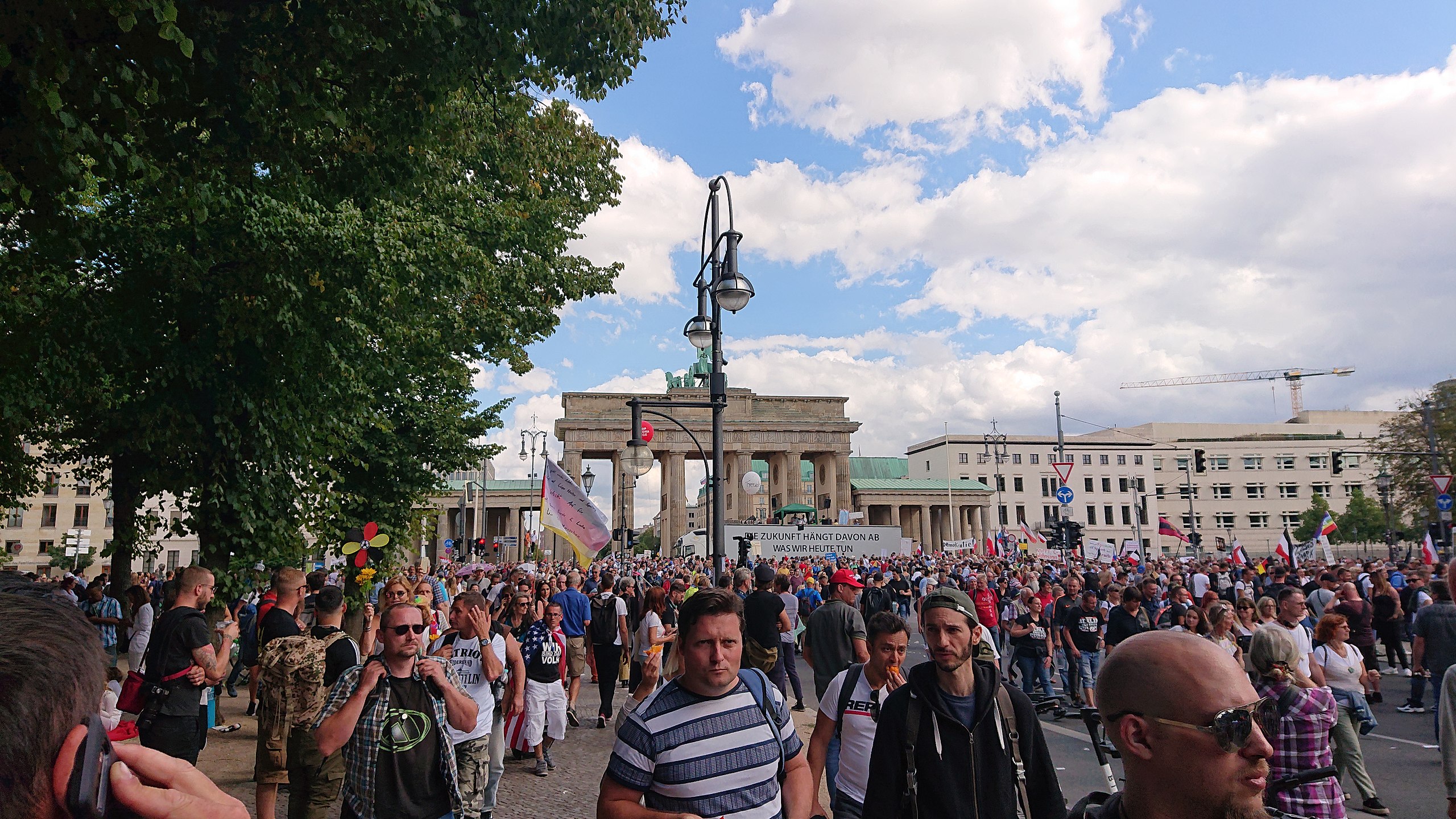
Thus, in this particular case–that of protest against public health guidelines–there was a convergence of two currents, each informed by specific cultural and regional historical foundations: the protest from the East and the protest from the South. (These sometimes overlapped, as in the case of Saxony.) That these movements march together in Berlin is not at all surprising. The narrative that these provinces are exploited by and subservient to the federal government has deep roots.
I don’t believe in the efficacy of appeasement: not in the face of conspiracy theories, and the movements they spawn. Confrontation is the only effective policy, especially in the era of online radicalization.
SP: Querdenken’s demonstrations were marked by extremely serious violence, which is quite rare in Germany. . .
MB: In a paper I wrote at the beginning of the pandemic, I warned that the current protest movements are fed by fantasies of revolutions and coups. The ideological heritage of the Gilets Jaunes, certainly informed by French revolutionary history, probably has little to do with that of the Querdenken, or of QAnon protesters. Also, we are not saying that all Querdenken or Gilets Jaunes/their sympathizers are anti-Semitic –this is in contrast to QAnon–but the environment that these groups create allows individuals to become ever more dangerously radicalized. However, the insurrectionary aspect that these movements have in common reveals something vital about their relationship to the state, and more specifically to the centrality of the state’s power.
Less than six months before the assault on the U.S. Capitol, demonstrators against the [German] government’s health policy tried, and almost succeeded, in the August 29, 2020 demonstration in Berlin, to storm the Reichstag, the seat of the German Parliament. Even if AfD officially distances itself from these actions, it should be remembered that during the last vote to extend the state of health emergency in the Bundestag (April 21, 2021), AfD deputies introduced demonstrators in order to intimidate the deputies of the majority[6]. During the demonstration, which turned into a riot, it was rumored that Trump had landed in Berlin to support the demonstrators, The message was clear: “Let’s take back control of our parliament”. This episode is a perfect example of how Querdenken and QAnon have converged.. In fact, when Querdenken’s founder, Michael Ballweg, spoke at the August 29 rally, he included QAnon’s slogan–“Where we go one, we go all,”–in his remarks.
Violent demonstrations continued, such as the one in Leipzig February 2021, during which the police were routed by protestors. The rally had initially been banned from the city center by the political authorities: it was supposed to be held away from the narrow street’s of Leipzig’s historic center, but a court finally ruled in the protestors’ favor. This kind of reversal is a disaster because it makes demonstrators believe they have won. When police officers express sympathy with, or back down in the face of, an offensive–or when demonstrators with an insurgent logic feel encouraged by a part of the institutions or authority figures, like Donald Trump telling his supporters to “march to the Capitol,”–it creates a real danger. For them, these are all victories that accumulate over time. I don’t believe in the efficacy of appeasement: not in the face of conspiracy theories, and the movements they spawn. Confrontation is the only effective policy, especially in the era of online radicalization.
SP: You question the court decisions that authorize racist and anti-Semitic demonstrations. However, the question of the responsibility of the German political class is more becomes rather more than questionable when, for example, the CDU Minister-President of Saxony, Michael Kretschmer, actually attended one of these demonstrations last May in order to exchange with the demonstrators, and did so without a mask. What signal does it send to the population about the extremist and neo-Nazi rhetoric when the head of the regional executive branch appears at a rally rife with both?
MB: It is clear there is a certain weakness of the political class in Germany, which is certainly due to the political cultures in the country. Berlin is a bubble unto itself, and each region has its own political culture. In Saxony, certain behaviors are possible that one could not imagine in Hamburg, or in Baden-Württemberg.
The [Stuttgart chapter of] Querdenken recently invited me to speak at one of their meetings in Stuttgart. Of course, I declined the invitation and told them I did not want my appearance to serve as a legitimization of the far-fetched and anti-Semitic statements that were made there. It was unimaginable for me to share the podium with notorious anti-Semites like Ken Jebsen. I could see they wanted to use me–that by my presence was to serve as a “kosher” stamp.
My message to my executive was this: Here in Baden-Württemberg we have a very dense network of people who for years and decades have been involved in associations, churches, mosques and Jewish community centers. We rarely speak to them, but are so quick to speak to those who conspire against them. I think that this sends a catastrophic signal. But very often, in such controversies, the excuse of regional political culture is employed, which is very effective in Germany.
Federalism is not just a question of the division of powers between the federal and regional states. As between European states, it is often a matter of political confrontation that can take the form of diplomacy or cooperation. When there is a crisis like Covid-19 or the emergence of protest movements bolstered by conspiracy theories, these differences come to the fore. The only way to understand such crises, and indeed Germany itself, is to understand Germany’s regions.
Samuel Petit
Notes
| 1 | This refers to opponents to hybrid/electric cars who still drive cars powered by diesel. |
| 2 | “Against all anti-Semitisms.” |
| 3 | A 27-year-old German neo-Nazi, Stephan Balliet, targeted the Jewish community in Halle-on-Saale on the Jewish holiday of Yom Kippur. Unable to enter the synagogue, he shot a woman in the street and the customer of a kebab restaurant. The assailant also targeted the Turkish community in Germany. He was charged with two murders and seven attempted murders and sentenced in December 2020 to life imprisonment |
| 4 | ED. NOTE: Querdenken (lit. trans. from German: ‘lateral thinking’) refers to the German anti-vaccine/anti-quarantine movement which formed in response to the COVID-19 pandemic. Gilets Jaunes (lit. trans. from French: ‘yellow vests’) refers to a French protest movement, formed in 2018 to advance an agenda of economic populism, and named for the yellow reflective vests worn by its adherents. Though neither movement is intrinsically anti-Semitic, both have attracted (and indulged) large numbers of anti-Semites, and both have proved effective vectors of anti-Semitism. |
| 5 | ED. NOTE: Pegida is the acronymous name of a German political party, the full name of which, translated into English, is ‘Patriotic Europeans Against the Islamisation of the Occident.’ The N.S.U. refers to the Nationalsozialistischer Untergrund or National Socialist Underground, a German neo-Nazi terrorist group active from 1999 to 2011, the year German Federal Police arrested the majority of its memebrs in a series of raids. In the intervening years, NSU bombings killed ten people, most of whom were Germans of Turkish origin. |
| 6 | ED. NOTE: AfD refers to Alternative für Deutschland, or Alternative for Germany, which is the country’s largest and most influential far-right political party. |
